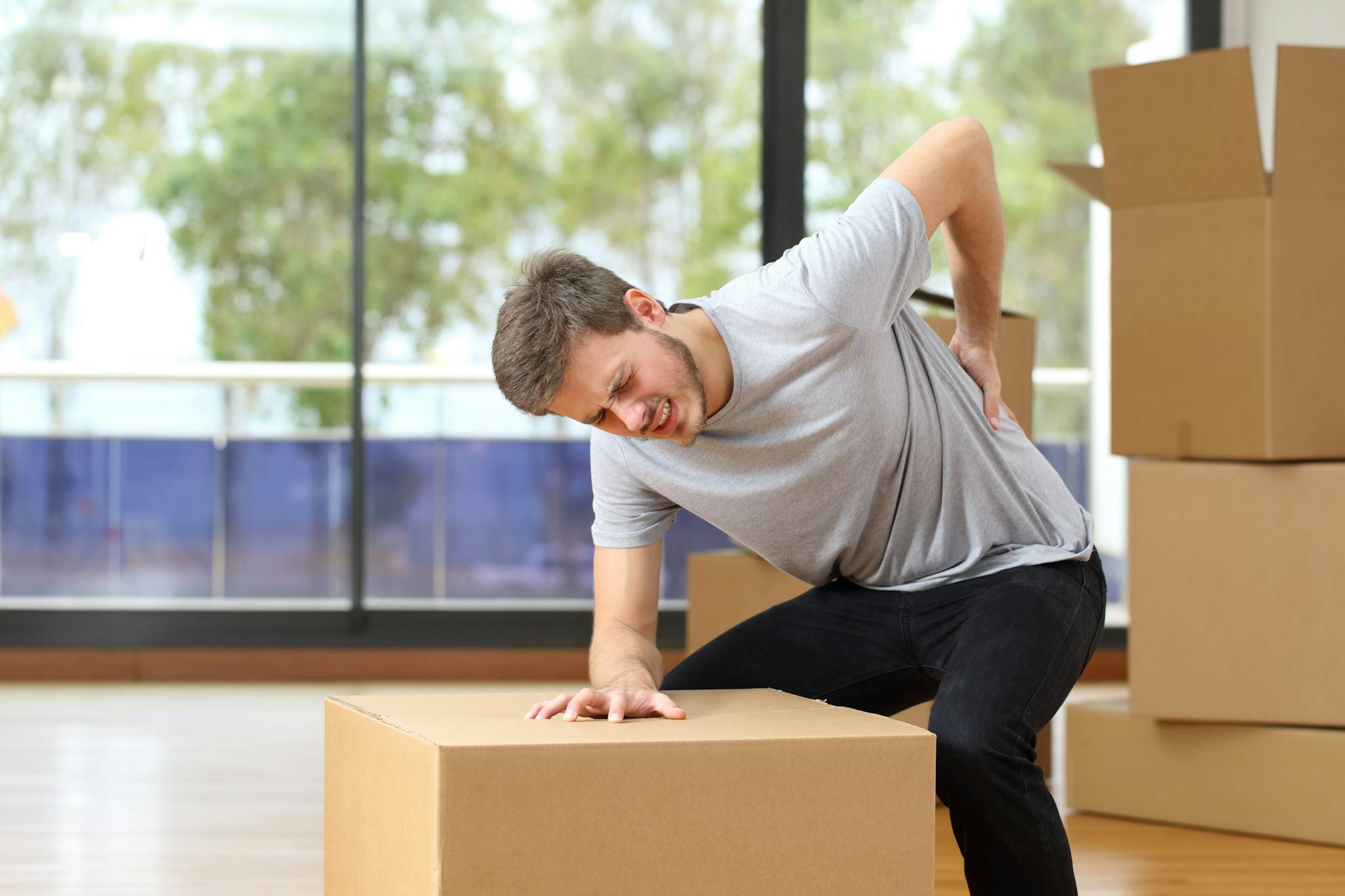
2025-06-10T13:54:10
Understanding Skin Grafts
- Dermatology
- Family Medicine
- Internal Medicine
- Orthopedics
August 24, 2016 | Orthopedics • Sports Fitness and Physical Therapy
Specialties:Orthopedics • Sports Fitness and Physical Therapy

Lifting heavy objects incorrectly can put undue stress on the lower back and cause serious back injury and pain.
The National Library of Medicine says that the most common cause of acute back pain is a sudden injury to the muscles and ligaments supporting your back. Lifting heavy objects can cause muscle spasms, strains and tears to the muscles and ligaments that lead to significant back pain. Rest, gentle exercise and over-the-counter pain medications help relieve back pain associated with heavy lifting, but you may require professional orthopedic care in some cases.
Lifting heavy objects correctly can reduce your risk for painful spasms, strains and tears.
Look for holes, tears, rips, dangling pieces or contents that may shift as you lift the object. Determine if the object is slippery or difficult to grasp.
Push the object lightly with your hands or feet to see how easily it moves. Remember – a small package is not always lightweight.
If it weighs more than you can safely lift by yourself, do not attempt it. Break down the object into smaller pieces and make several trips, if possible, or ask someone to help you.
Decide ahead of time where you will put the object and how you will get it there. Map out a safe route and remove any obstacles that may trip you. Beware of puddles, uneven floors and unsecured rugs that may slip out from under you. Determine if you will need a ladder, dolly, hand truck, gloves or other special equipment.
A partner can help you lift especially heavy objects, move obstacles that unexpectedly fall into your path, or act as a spotter who alerts you to trouble when the object you are carrying obscures your view. Discuss your plan in detail with your partner before you begin so that you work together as a team.
If the object is on the floor, lift it from a kneeling position rather than bending over. Stand as close to the object as possible and put one knee on the floor. Rest the object on your knee as you prepare to stand.
Keep the core muscles in your abdomen tight as you stand. Look straight ahead and keep your head back to maintain proper alignment in your neck and back. Use the muscles in your legs, not the muscles in your back, to lift the item. Avoid twisting at the waist as you lift, as this can wrench the muscles in your back. If you need to turn, step to the side.
Do you have trouble kneeling or rising from a kneeling position? You can safely lift higher objects, like those on a table, without kneeling. Start by spreading your feet shoulder-width apart to give your body a wide base of support. You may find that putting one foot slightly in front of the other increases stability. Stand as close as possible to the object then bend at your knees, not at your waist, as needed to pick up the object.
You might find it easier to tilt the object onto its side to ensure a firm hold.
Use the muscles in your legs, not your back, to slowly lift the object. Maintain the natural curve of your back as you lift and keep your core muscles tight.
Hold it at belly button level, if you can. Holding a heavy object away from your body puts extra stress on the muscles of your back and this strain could lead to injury.
Breathe as normally as possible when you lift a heavy object. Holding your breath during physical exertion can cause cramps or even push your blood pressure to rise to an unsafe level. Breathing normally also delivers oxygen to your muscles. Put the object down and rest if you feel out of breath.
Walk slowly and deliberately while carrying heavy objects. Rushing increases the risk for falling.
Use your feet to change direction rather than twisting at your waist to avoid injuring your lower back. Take small steps as you change direction. Lead with your hips and keep your shoulders aligned with your hips as you move.
Squat down using the same proper body mechanics as when you picked up the object – keep your back straight, look at the wall and tighten your core muscles.
Weight alone does not determine the risk for back injury. Other risk factors for back injury include:
How often you lift heavy items
Whether you bend or twist while lifting
How high you lift an object
The original height of the item – objects resting below the level of your knuckles present greater risk for back injuries
The distance from your body at which you hold an object
The length of time it takes to lift an object and the amount of time you hold it

WRITTEN BY:
The Live Better Team

2025-06-10T13:54:10

2024-06-21T14:29:51

2024-02-06T11:40:13

2023-03-30T11:23:12
This information is not intended to replace the advice of a medical professional. You should always consult your doctor before making decisions about your health.